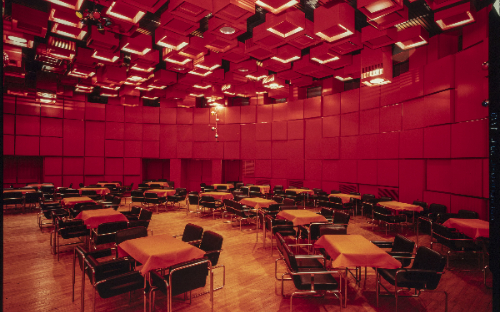
During the Cold War, the geopolitical conflict between the two superpowers, the United States and the Soviet Union, had an effect on design and architecture. “Designers and architects from both systems were confronted with the same social challenges, worked on similar design issues and sustainable solutions for the environment, developed comparable ideas and designed visionary projects – which often did not get beyond the experimenta,” according to the announcement of the exhibition “Retrotopia. Design for Socialist Spaces” at the Berliner Kunstgewerbemuseum. Through exhibitions, congresses, workshops and symposia, specialist publications and, last but not least, through personal contacts, there has also been a lively exchange through the “iron curtain”, despite the separation..
People wanted to think about the future between Sputnik and the oil crisis of the 1950s to 1970s, which seemed “absolutely calculable thanks to technological progress, artificial intelligence, cybernetics, and computerisation.” “Technological progress equals social prosperity equals happiness for all,” according to the “associated narrative in post-war modernity,” which is still valid today.
For the first time in a long time, various design positions from post-socialist nations such as Estonia, Lithuania, Poland, Hungary, Slovakia, Croatia, Slovenia, and Ukraine will be exhibited at the Berlin Museum of Decorative Arts from March 25 to July 16. “A kaleidoscope of realised and visionary design concepts dedicated to public and private space” will be on display at the exhibition. Whereby ‘space,’ as defined by Henri Lefebvre, is understood as a mental, physical, and symbolic construct.” The concepts vary from futuristic interiors for hotels or an airport presidential lounge to visual communication for competitions or festivals in public urban space to reconstructions of visionary architecture and cybernetic living spaces.
Photographs, posters, magazines, books, films, and design objects will be utilized to create a three-dimensional mind map on thematic clusters of design institutions, design education, design discourse, exhibitions, networks, and design collections, inviting in-depth discussion. Claudia Banz curated and directed the project, which was developed as a worldwide collaboration project with a significant number of museums in collaboration with numerous co-curators. Verlag Kettler has produced a catalogue to accompany the exhibition.
More on ndion
Discover more articles on the topic of design as well as current exhibitions.
Share this page on social media:

